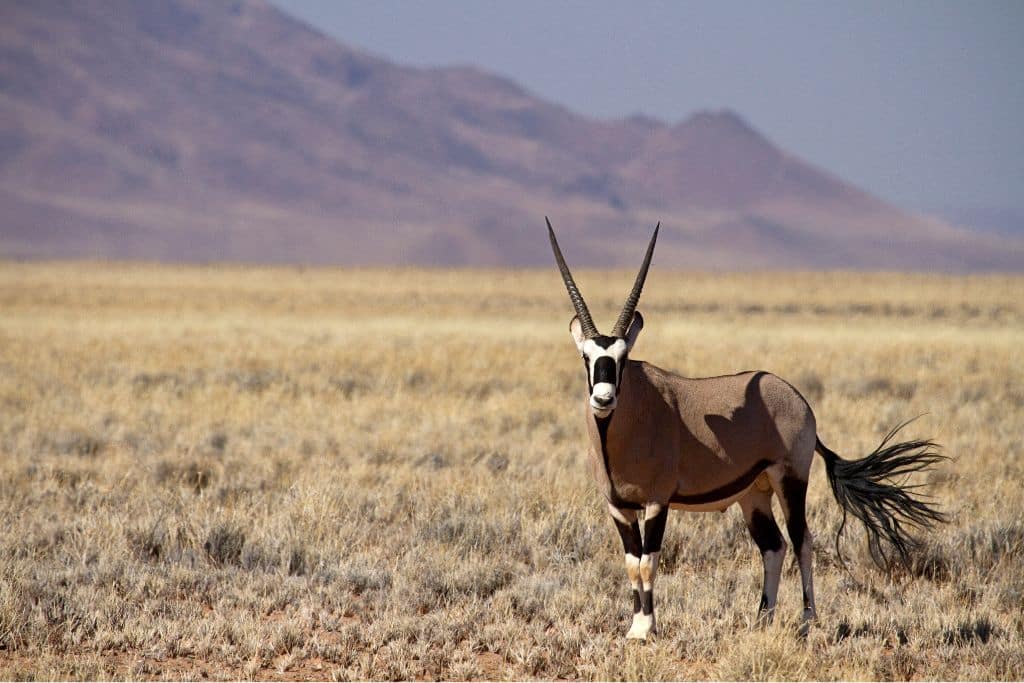There are now 16,306 endangered animal species in the world, and the global extinction rate is between a thousand and ten thousand times the normal extinction rate. Captive breeding programs and consistent human intervention can be a viable strategy to slow down this trajectory, but will they help in the long run?
—
What Are Breeding Programs?
Captive breeding is the practice of breeding wild animals in facilities such as zoos and wildlife parks, primarily to aid in the preservation of endangered species that are threatened with extinction in the wild.
Conservation biologists have consistently sought to avoid the extinction of species in the wild, often by eliminating potential threats such as invasive species, habitat degradation, and poaching. In many instances, however, in-situ conservation measures (i.e. the use of a wide geographical area for conservation) may be inadequate, since not all species can be effectively conserved in their native habitats. This then necessitates more extreme forms of intervention, such as captive breeding or other ex-situ conservation measures (i.e. using zoos, aquariums, or botanical gardens for breeding), so as to increase the likelihood of species survival.
The preservation of genetic diversity within a species is a primary objective of captive breeding programs. The first serious captive breeding initiatives were launched during the 1960s. Some of the earliest of these efforts, such as the Arabian Oryx breeding program at the Phoenix Zoo in 1962, aimed to restore these creatures to the wild. In order to preserve biodiversity, the Nixon administration in the United States created the 1973 Endangered Species Act, which prioritised the preservation of endangered species and their habitats. Since then, research and conservation have mostly taken place at zoos, such as the San Diego Zoo’s Institute for Protection Research, which was founded in 1975 and has contributed to the successful conservation of some species such as the Hawaiian Crow.
Conservation genetics has gained significant popularity in recent years. Knowledge of the relativity of individual species is particularly important in captive breeding programs that attempt to reduce inbreeding and loss of genetic variation. These are some of the problems that distinguish between in-situ and ex-situ conservation, as the wide geographical areas of in-situ conservation methods often cannot guarantee the preservation of sustainable genetic output. For ex-vitu programs to work, as many original species (the “founding” species) as possible should be used to start a big, non-inbred, and sustainable captive breeding program. However, vulnerable species brought into captivity often have limited populations, which consequently limits the potential for most of these programs.
What Kinds of Breeding Programs Are There?
Conservation breeding programs allow zoos to promote research, conservation education, and advocacy. Because these approaches tend to be specialised towards a single species or a group of closely related species, it typically takes a large amount of study to discover viable techniques for growing a species in captivity and returning it to the wild.
The participation of zoos and aquariums in cooperative worldwide and regional ex-situ breeding operations can be divided into several branches, including but not limited to the following:
- Those that support demographic and genetic reserve populations for wild populations;
- Those that support vital research and provide opportunities for public awareness;
- Those that are dedicated to creating a conservative population that is demographically stable, genetically healthy, well-maintained, and capable of self-sustaining reproduction, distributed across multiple institutions to reduce the risk of catastrophic loss, and large enough to preserve high levels of genetic diversity.
Regional organisations often administer conservation breeding programs and have created special committees to supervise the work. These activities may involve data collecting, long-term ex-situ population management after they are released back into the wild, or in-situ conservation programs leading to the species’ reintroduction. In North America, the Association of Zoos and Aquariums (AZA) utilises the Species Survival Plan (SSP) to maintain healthy, self-sustaining, genetically diverse as well as demographically stable populations of each species in human care, and they also organise zoo and aquarium-based efforts to preserve the species in their natural habitats.
Some Success Stories
In the history of worldwide breeding programs, the reintroduction of the Arabian oryx was one of the first-ever successful projects. The Arabian oryx is a white ungulate that formerly roamed the Arabian Peninsula in large numbers until it was driven to extinction in the wild in 1972. In 1962, the Phoenix Zoo initiated a captive breeding experiment, and from 9 oryxes, over 200 offspring were eventually produced. These oryxes were sent to zoos around the globe, and many additional herds were subsequently bred in captivity. The first Arabian oryx were reintroduced to Oman in 1982, and their population expanded during the subsequent two decades. There are now reintroduced populations in Oman, Saudi Arabia, and Israel numbering roughly 1,100 wild oryxes.
One significant disadvantage of the Arabian oryx initiative is that the majority of the wild oryxes put back into the wild are male. The absence of gender variety may soon lead to the extinction of the population. Regions including Israel, India, and Arabia currently lack official legislations that prohibit the hunting of these species, putting the objectives of these breeding programs back to the drawing board.
Other recent examples of successful captive breeding include the California condor, the black-footed ferret, the golden lion tamarin, and the red wolf. In order to live in the wild, captive animals must be taught fundamental survival skills. Some animals possess natural talents, while others must be acquired via social interaction. They must learn how to hunt food, evade predators, attract a partner, and construct or locate suitable shelter. But just like the Arabian oryx initiative, many of these programs put their focus on merely increasing numbers, and the longevity of these breeding populations is often an afterthought.
You might also like: 10 of the World’s Most Endangered Animals in 2022
Drawbacks
The survival training of animals, in addition to other additional expenses such as food and heating, can make ex-situ breeding operations highly expensive. Since 1987, the California condor reintroduction effort in the US has cost over $35 million, making it the most costly captive operation ever. In the early years of the program, a significant number of reintroduced California condors perished after being released owing to unexpected lead poisoning and accidents with power lines.
In this realm of conservative efforts, the use of captive breeding for species recovery has increased dramatically over the years, but there was never a corresponding grasp of its limits. There have been significant concerns in developing self-sufficient captive populations, poor reintroduction success, high costs, domestication, preemption of alternative recovery efforts, disease outbreaks, and administrative continuity. Captive breeding should typically not be undertaken until a thorough field evaluation of the costs and benefits of all conservation measures has been performed. Simply demonstrating that a species’ population is declining or has fallen below a minimal sustainable size is inadequate to justify captive breeding as a recovery method.
Long-Term Concerns
Reproduction in captivity may play a significant role in the recovery of certain species for whom there are no immediate viable alternatives. However, it should not replace habitat and ecosystem preservation, nor should it be invoked in lieu of comprehensive measures to sustain or restore populations in their natural environments. In zoological facilities with captive breeding programs, illness prevention and genetic management should be properly outlined. These institutions should also aid in the preservation of biodiversity by providing public education, professional training, research, and support for in situ conservation activities.
It takes time to determine what constitutes a successful reintroduction program. Their purpose is not only to increase population size but also to improve the chances of survival for the new offspring. How to assess the performance of captive breeding programs and how to minimise the risks to animals following their release are crucial aspects of captive breeding projects. For instance, following the previous example of California condors, the unfortunate lead poisoning of these animals in the wild could not have been predicted. But subsequently, the Ridley-Tree Condor Preservation Act, a federal law that prevents hunters from using lead bullets inside the condor’s range, soon went into force in 2008 to bypass this issue.
This demonstrates the significance of federal protection and environmental legislation to conservation efforts when compared to mere preventative breeding programs. Behind the effort and care of every individual species engaged in captive breeding, finance and public support are essential. Without them, these man-made programs to save whole species or subspecies would be impossible.
You might also like: Are Humans an Invasive Species?


















